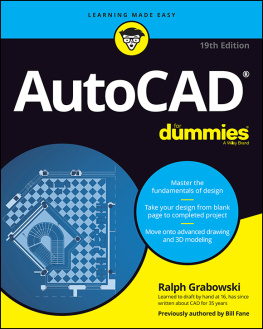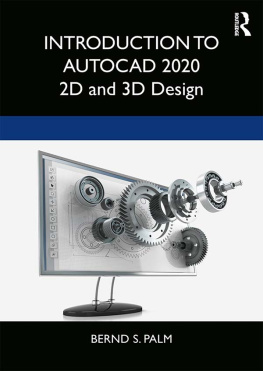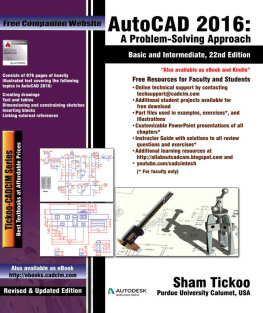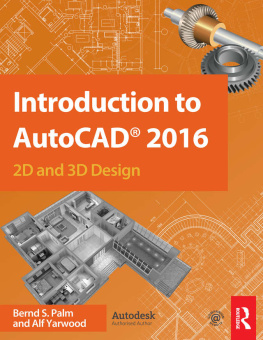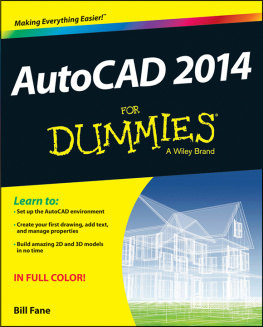About This eBook
ePUB is an open, industry-standard format for eBooks. However, support of ePUB and its many features varies across reading devices and applications. Use your device or app settings to customize the presentation to your liking. Settings that you can customize often include font, font size, single or double column, landscape or portrait mode, and figures that you can click or tap to enlarge. For additional information about the settings and features on your reading device or app, visit the device manufacturers Web site.
Many titles include programming code or configuration examples. To optimize the presentation of these elements, view the eBook in single-column, landscape mode and adjust the font size to the smallest setting. In addition to presenting code and configurations in the reflowable text format, we have included images of the code that mimic the presentation found in the print book; therefore, where the reflowable format may compromise the presentation of the code listing, you will see a Click here to view code image link. Click the link to view the print-fidelity code image. To return to the previous page viewed, click the Back button on your device or app.
Engineering Graphics with AutoCAD 2023
James D. Bethune
David Byrnes

Engineering Graphics with AutoCAD 2023
Copyright 2023 by Pearson Education, Inc. All rights reserved. This publication is protected by copyright, and permission should be obtained from the publisher prior to any prohibited reproduction, storage in a retrieval system, or transmission in any form or by any means, electronic, mechanical, photocopying, recording, or likewise. For information regarding permissions, request forms, and the appropriate contacts within the Pearson Education Global Rights & Permissions department, please visit www.pearson.com/permissions/.
Many of the designations by manufacturers and sellers to distinguish their products are claimed as trademarks. Where those designations appear in this book, and the publisher was aware of a trademark claim, the designations have been printed in initial caps or all caps.
Certain images and materials contained in this publication were reproduced with the permission of Autodesk, Inc., 2022. All rights reserved. Autodesk, AutoCAD, Revit, DWG, and the DWG logo are registered trademarks of Autodesk, Inc., in the U.S.A. and other countries.
Credits and acknowledgments borrowed from other sources and reproduced, with permission, in this textbook appear on appropriate pages within the text.
For government sales inquiries, please contact .
For questions about sales outside the U.S., please contact .
Notice of Liability
The publication is designed to provide tutorial information about AutoCAD and/or other Autodesk computer programs. Every effort has been made to make this publication complete and as accurate as possible. The reader is expressly cautioned to use any and all precautions necessary, and to take appropriate steps, to avoid hazards when engaging in the activities described herein.
Neither the authors nor the publisher makes any representations or warranties of any kind with respect to the materials set forth in this publication, express or implied, including without limitation any warranties of fitness for a particular purpose or merchantability. Nor shall the authors or the publisher be liable for any special, consequential, or exemplary damages resulting, in whole or in part, directly or indirectly, from the readers use of, or reliance upon, this material or subsequent revisions of this material.
Editor-in-Chief: Mark Taub
Acquisitions Editor: Anshul Sharma
Development Editor: Patrice Rutledge
Managing Editor: Sandra Schroeder
Senior Project Editor: Tonya Simpson
Copy Editor: Kitty Wilson
Cover Designer: Chuti Prasertsith
Composition: codeMantra
Proofreader: Jen Hinchliffe
Indexer: Erika Millen
Library of Congress Control Number: 2022940668
ISBN 10: 0-13-792999-4
ISBN 13: 978-0-13-792999-3
ScoutAutomatedPrintCode

Pearsons Commitment to Diversity, Equity, and Inclusion
Pearson is dedicated to creating bias-free content that reflects the diversity of all learners. We embrace the many dimensions of diversity, including but not limited to race, ethnicity, gender, socioeconomic status, ability, age, sexual orientation, and religious or political beliefs.
Education is a powerful force for equity and change in our world. It has the potential to deliver opportunities that improve lives and enable economic mobility. As we work with authors to create content for every product and service, we acknowledge our responsibility to demonstrate inclusivity and incorporate diverse scholarship so that everyone can achieve their potential through learning. As the worlds leading learning company, we have a duty to help drive change and live up to our purpose to help more people create a better life for themselves and to create a better world.
Our ambition is to purposefully contribute to a world where
Everyone has an equitable and lifelong opportunity to succeed through learning
Our educational products and services are inclusive and represent the rich diversity of learners
Our educational content accurately reflects the histories and experiences of the learners we serve
Our educational content prompts deeper discussions with learners and motivates them to expand their own learning (and worldview)
While we work hard to present unbiased content, we want to hear from you about any concerns or needs with this Pearson product so that we can investigate and address them.
Please contact us with concerns about any potential bias at https://www.pearson.com/report-bias.xhtml.
Preface
This text teaches technical drawing and uses AutoCAD 2023 as its drawing instrument. Although it follows the general format of many technical drawing texts and presents much of the same material about drawing conventions and practices, the emphasis is on creating accurate, clear drawings. For example, the text shows how to locate dimensions on a drawing so that they completely define the object in accordance with ASME Y14.5-2009 national standards, but the presentation centers on the AutoCADs Dimensions panel and its associated tools and options. The standards and conventions are presented and their applications are shown with the use of AutoCAD 2023. This integrated teaching concept is followed throughout the text.
Most chapters include drawing problems. The drawing problems are varied in scope and are open-ended, which means that there are several correct solutions. This is intended to encourage student creativity and increase their problem-solving abilities.
describe how to bisect a line and how to draw a hyperbola, a parabola, a helix, and an ogee curve. Redrawing many of the classic geometric shapes will help students learn how to use the


